As we think about food, our thoughts often drift off to the shores of our Adriatic coast.
Why? At the heart of Croatian Adriatic, Dalmatia, the salty sea mingles with earthy whispers of rolling mountains and strong cleansing winds.
Croatia, a country blessed with a dramatic coastline and fertile hinterland, offers an abundance of culinary delights originating from diverse landscapes.
Freshly caught seafood, simply prepared, mingles with rich stews simmered for hours, their warmth echoing the hospitality of the local people.
Croatian cuisine is influenced by other cultures, and this is true. But what an influence this is. An unforgettable one.
So, let's take a seat, raise a glass of wine, and see what's on the list of the most delicious and homey traditional Croatian food—coastline edition.
Traditional Croatian food - Dalmatian style starters
Croatia offers a delightful array of appetizers, ideally suited for sharing and even becoming a main course or an afternoon snack. And here's a list of our starters to get you started.
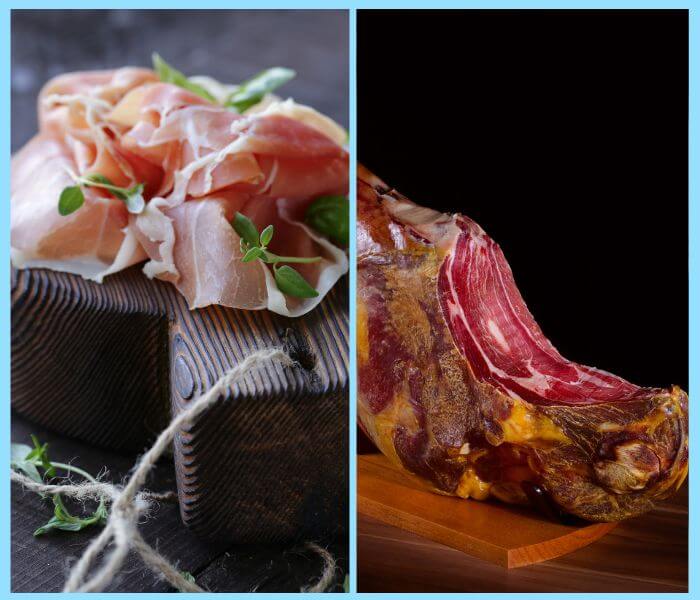
Dalmatinski pršut - Dalmatian prosciutto
Dalmatinski pršut is an air-dried ham produced in Dalmatia, similar to prosciutto. It is made from hams that are salted, pressed, smoked, and hung to dry for at least 12 months.
Dalmatinski pršut is a protected geographical indication (PGI) product, which means that it can only be produced in Dalmatia using traditional methods.
This ensures that the product is of the highest quality and has a unique flavour specific to the region.
How to enjoy Dalmatinski pršut?
Dalmatinski pršut is delicious and versatile and can be enjoyed in various ways. Still, it is best plain with a piece of homemade bread. It has an authentic taste of Dalmatia and is a must-try for any visitor to the region.
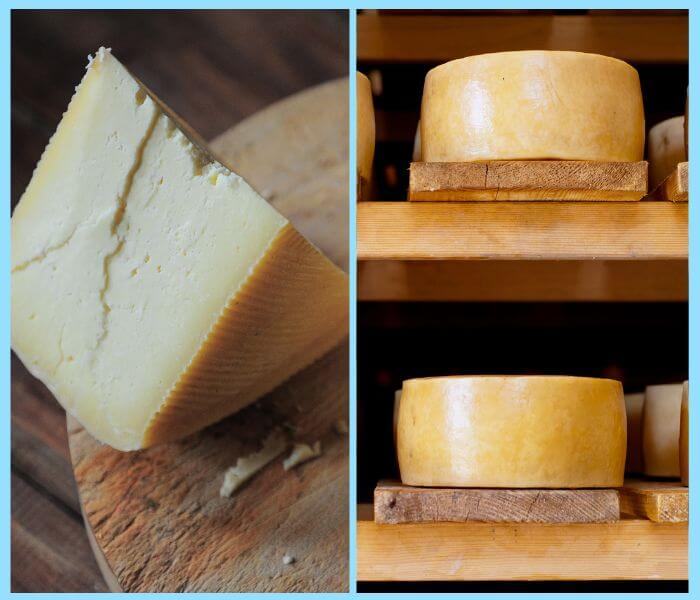
Paški sir – Pag cheese
Paški sir is more than just cheese; it's a cultural heritage and a testament to Croatian culinary tradition.
Renowned for its unique flavour and rich history, Paški sir is a must-try.
Of all the things that make Paški sir so special, the island of Pag's unique microclimate is one of them, as it plays a vital role in shaping this cheese's flavour.
The northern wind Bura carries sea salt inland, infusing the vegetation sheep graze on. This results in savoury cheese with a complex and lingering aftertaste.
Paški sir follows a time-honoured production process passed down through generations.
It has garnered international acclaim, winning numerous awards and recognitions for its exceptional quality and unique taste.
How to Enjoy Pag cheese?
Simple is best because Paški sir shines on its own. Thinly sliced and enjoyed with a drizzle of olive oil and homemade bread is the best way to appreciate its full potential.
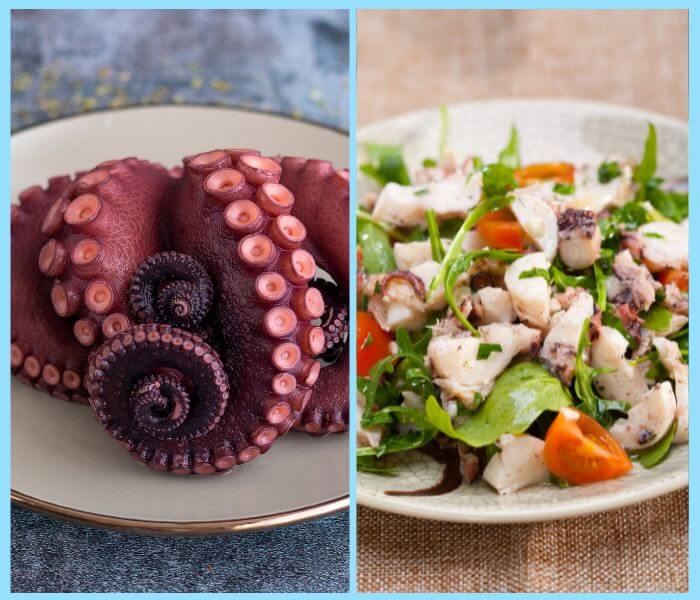
Salata od hobotnice - Octopus salad
Salata od hobotnice, also known as Dalmatian octopus salad, is a refreshing dish showcasing the Adriatic Sea's bounty, featuring tender octopus bathed in a simple yet flavourful marinade.
What makes this octopus salad so unique?
The dish's foundation is a high-quality, fresh octopus. It's typically boiled or stewed until tender, ensuring a perfect texture.
Then extra virgin olive oil, garlic, and fresh herbs like parsley and sometimes capers are added to the base of the marinade.
The tender octopus is often accompanied by diced red onion and sometimes potatoes for a delightful textural contrast.
How to enjoy octopus salad?
Served chilled, salata od hobotnice is a perfect way to start a meal, and it's best paired with a glass of local white wine.
Traditional Croatian food - Dalmatian style main course
Dalmatia and the Croatian coast offer a delightful mix of fresh seafood dishes and hearty meat options. Hints of Italy peek through many dishes, while whispers of Central Europe also linger in succulent meat options.
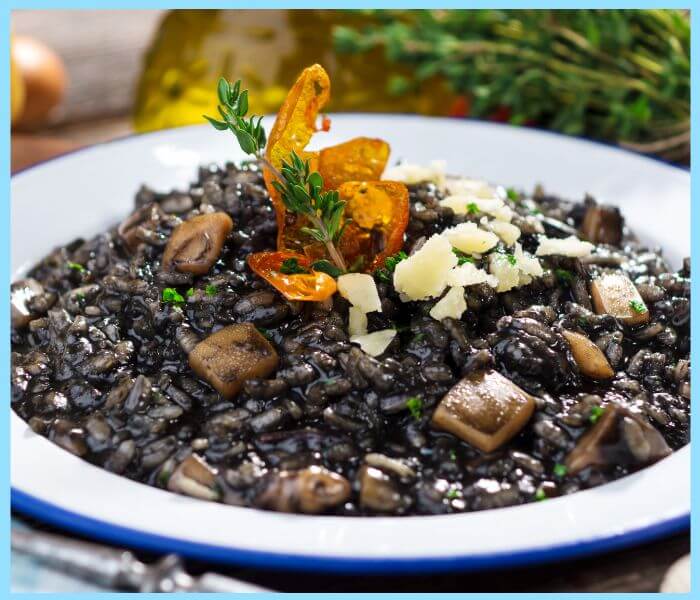
Crni Rižot - Black risotto
Black risotto, also known as Crni Rižot in Croatian, is a signature dish. This visually striking dish celebrates the region's rich seafood tradition.
The magic of Black Risotto lies in the unique ingredient – cuttlefish ink. This inky black liquid, a cuttlefish defence mechanism, is carefully extracted, adding a dramatic jet-black colour to the risotto. It also infuses the rice with a deep, earthy flavour with subtle briny notes.
Arborio rice is the perfect base for Black Risotto. This short-grain variety is known for its high starch content. It is released during cooking, creating a creamy texture essential for risotto.
Why to try black risotto?
Black Risotto is more than just a dish; it's an experience that captures the essence of Dalmatia's maritime heritage and offers a delicious way to explore the unique flavours of the Adriatic Sea.
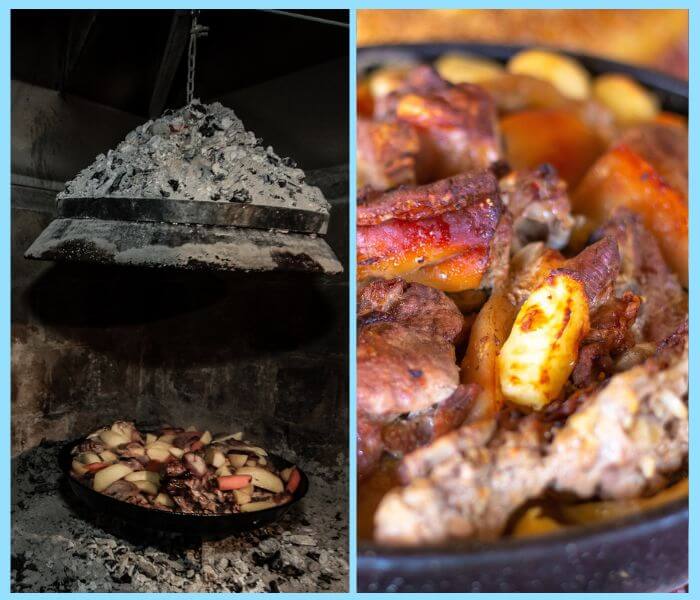
Peka - Under the Bell
Peka or ispod peke, meaning "under the bell" in Croatian, is a traditional cooking method that transforms simple ingredients into something quite special.
This time-honored technique involves a peka—a domed metal lid on which hot coals or embers are placed. Inside this fiery chamber lies a feast waiting to be born.
Peka is usually best for seasonal offerings such as succulent octopus or cuts of lamb or veal. Vegetables like potatoes are generally a must, but other vegetables are also welcome to add flavour.
Slow-cooked to juicy perfection, the ingredients absorb the wood fire, infusing them with a distinctive aroma and depth of flavour.
Why try Peka?
Peka isn't just a cooking method; it's a culinary journey where patience and fire work together to create a traditional and deeply satisfying dish.
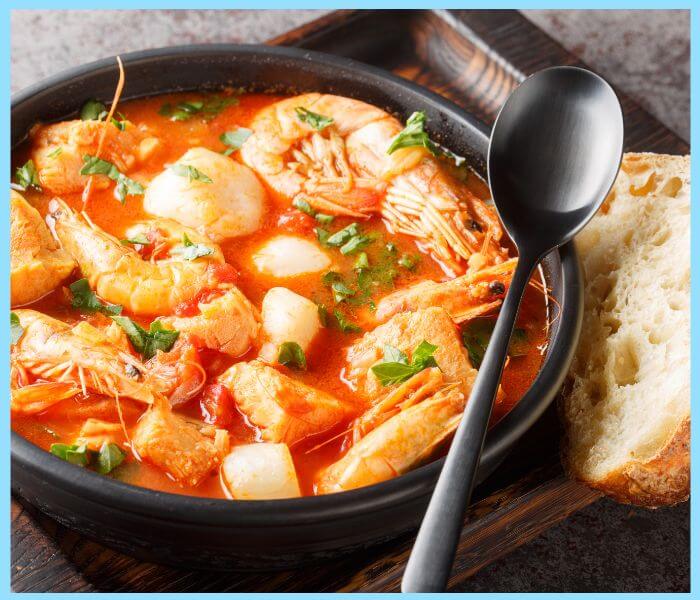
Brudet - Fish Stew
Brudet is a rich and savoury fish stew that epitomizes the culinary traditions of coastal regions abutting the Adriatic Sea. This dish is prepared by simmering a diverse selection of locally caught fish in a robust and aromatic broth, including anything from sea bass to scorpionfish.
The broth itself is a harmonious blend of ripe tomatoes, dry white wine, and herbs, imbuing the stew with layers of flavour.
Brudet is a comforting and filling meal that celebrates the local seafood bounty. It is often accompanied by hearty sides like crusty bread or creamy polenta.
Enjoyed in homes and restaurants alike, Brudet is a meal that brings people together, embodying the spirit of sharing and hospitality.
Why try Brudet?
Boudet is a testament not only to Dalmatia's rich culinary heritage but also to its reliance on and respect for the sea's resources.
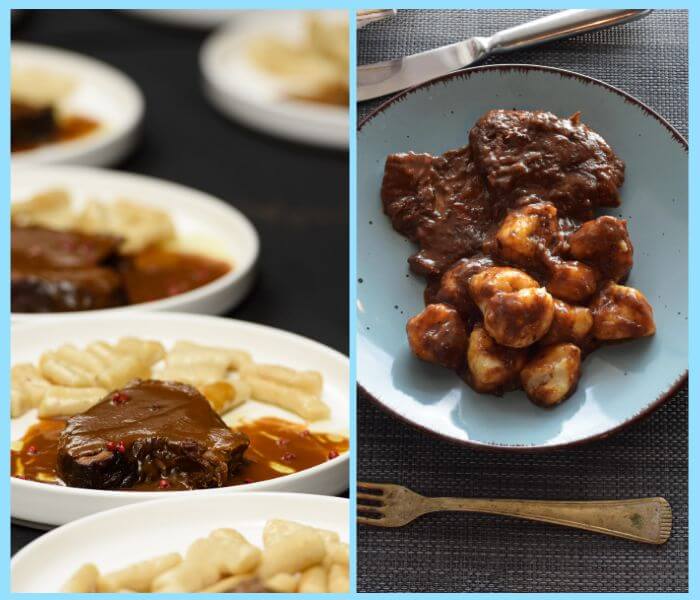
Pašticada
Pašticada is celebrated as one of the national treasures, and it's revered for its deep, complex flavours and tender texture.
This exquisite dish involves slow-cooking beef meticulously marinated in rich red wine, prunes, and an array of spices. The meat transforms into an incredibly soft delicacy that practically melts in the mouth.
The meticulous preparation and slow cooking process infuse the beef with flavours, making Pašticada a standout dish that embodies Croatian culinary prowess.
It's a testament to the country's love for hearty meals steeped in tradition.
How to enjoy pašticada?
To truly enjoy Pašticada, serve it with gnocchi or homemade pasta, which perfectly complements the stew's richness.
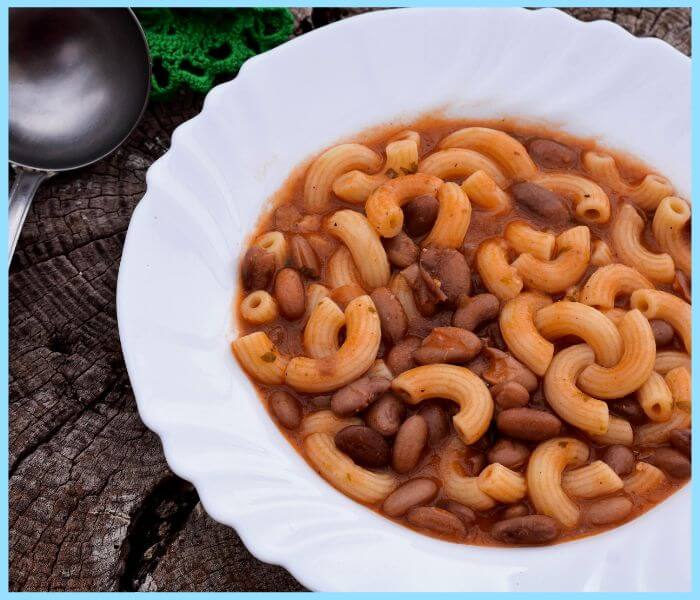
Pašta Fažol - Pasta and Beans
Pašta Fažol, a classic vegetarian dish, perfectly balances simplicity and heartiness.
Traditionally, this dish combines beans and pasta, simmered together in a rich tomato sauce with aromatic herbs, creating a comforting meal that's both satisfying and flavorful.
However, Dalmatians have a unique twist to elevate this dish—the inclusion of a prosciutto bone during the cooking process. This addition imparts a deeper, enhancing its complexity while maintaining its vegetarian base. The result is a richly layered, savoury meal steeped in local culinary traditions.
How to enjoy pašta fažol?
To fully enjoy Pašta Fažol, embrace its versatility. Serve it hot as a main course, with a drizzle of olive oil.
Traditional Croatian food – Dalmatian style snacks and sweets
Ah, the Croatian desserts. Indulgence is their middle name. Must-try is their surname.
But all puns aside, Croatian, especially Dalmatian desserts, use simple ingredients and traditional baking methods.
They are a delicious way to experience the region's culinary heritage. So next time you're sailing the coast, look for these desserts to add a touch of Croatian sweetness to your adventure!
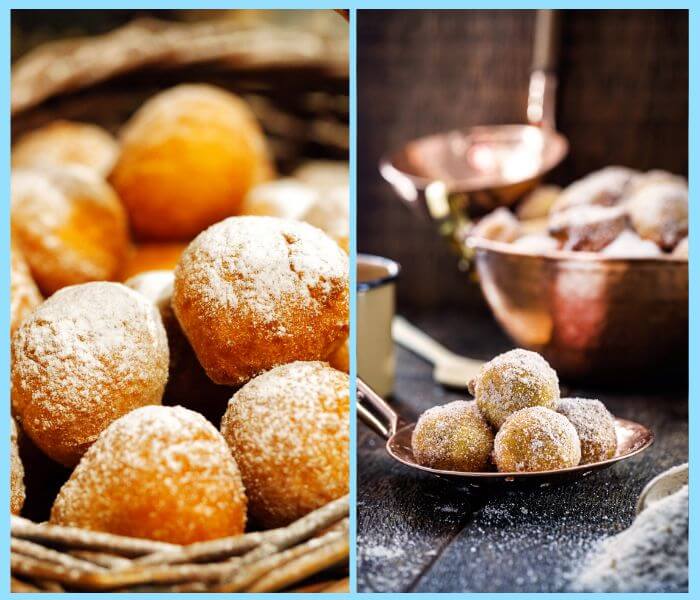
Fritule
Fritule are a beloved delicacy, especially in Croatian cuisine, resembling tiny, deep-fried dough balls that offer a delightfully crispy exterior with a soft, airy interior. These dough puffs are lightly sweetened, incorporating a hint of lemon zest or raisins for a subtle flavour twist. They are traditionally dusted with powdered sugar to enhance their sweetness. They are commonly served warm, providing a comforting and satisfying treat that perfectly pairs with morning coffee or tea. Fritule are a festive staple during holidays and celebrations, offering a sweet bite that evokes a sense of home and tradition.
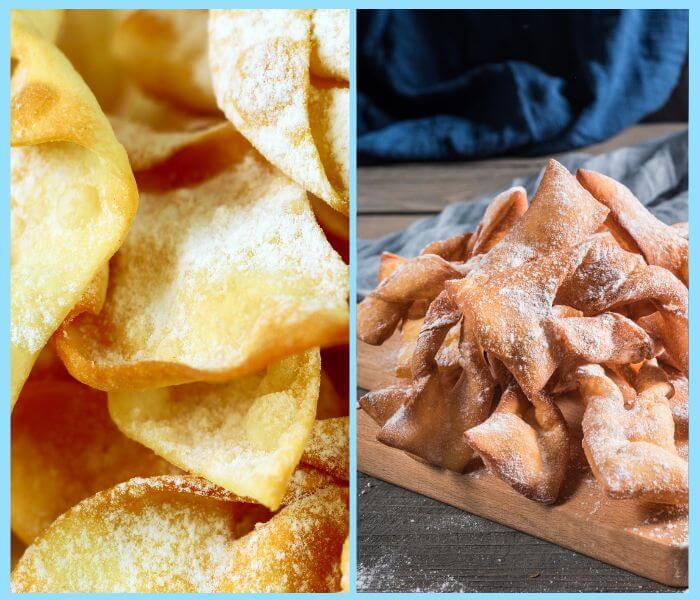
Kroštule
Kroštule are traditional, light, and airy pastries and a must at celebrations and family gatherings. Made from a simple dough that's rolled thin, twisted into unique shapes, and then deep-fried to perfection, they achieve an irresistible golden, crispy texture.
Once they emerge from the frying oil, these delicate treats are liberally dusted with powdered sugar, adding a sweet finish to their savoury crunch.
The contrast between the crispy exterior and the sweet topping makes kroštule a highly sought-after indulgence, perfect for satisfying sweet tooth cravings.

Ušećereni bademi - Candied Almonds
These delightful bites are a staple in many Croatian households, especially during the holidays. They are made of equal parts of whole almonds, sugar, and water and cooked until coated with a layer of hardened sugar. Ušećereni bademi are a perfect sweet snack and a traditional treat, combining a satisfying crunch and a burst of sweetness.
And as you can see for yourself, Croatians, especially Dalmatians, are resourceful when it comes to food. What little they have, made possible by the sea and nature, they have definitely transformed into culinary magic.
So our advice is again: Don't even accidentally sail along the Croatian coast and try at least one of both delicacies on the same day—there are many more, trust us.
Every place in Dalmatia and every tavern offers some of these traditional dishes and desserts - try them and let us know if we were right.


